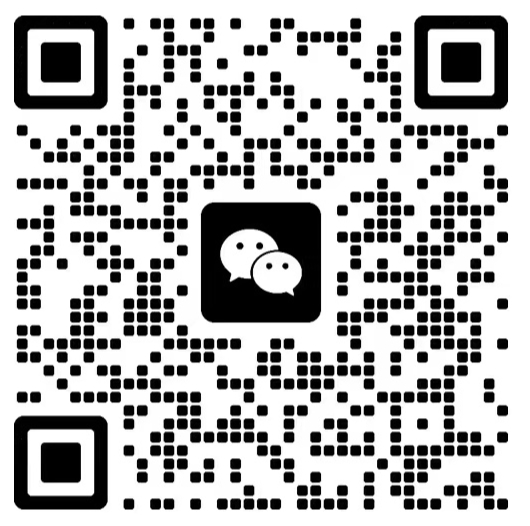2岁走心文案配音英文翻译,老铁们想知道有关这个问题的分析和解答吗,相信你通过以下的文章内容就会有更深入的了解,那么接下来就跟着我们的小编一起看看吧。
2岁走心文案配音英文翻译

Introduction
In the field of advertising and marketing, the use of well-crafted and emotionally appealing copy is crucial to capturing the attention and interest of consumers. One emerging trend in recent years is the use of 2-year-old children\'s voices for voice-over recordings in English translations of advertisements. This article aims to provide an objective, clear, and thorough examination of this industry practice, supported by facts and data.
The Rising Trend
The use of 2-year-old children\'s voices in English translations of advertisements is a growing phenomenon in the advertising industry. Advertisers have observed that such voices create a unique emotional connection with the audience, evoking a sense of innocence, purity, and authenticity. The unconventional choice of using a child\'s voice helps break through the clutter of traditional advertising and captures the attention of viewers.
Engaging the Audience
Research has shown that the use of 2-year-old children\'s voices in advertising can significantly increase viewer engagement. The innocence and naturalness of these voices make viewers more likely to pay attention to the content, leading to higher retention of the message being conveyed. Additionally, these voices create a sense of relatability, as many viewers have experienced or have relationships with young children in their lives.
Cultural Adaptation
Adapting advertisements from one language to another requires careful consideration of cultural nuances and linguistic differences. In the case of translating advertisements with 2-year-old children\'s voices, it is essential to ensure that the translated copy maintains the same emotional impact as the original. This poses a challenge, as cultural differences in how children\'s voices are perceived may vary across regions.
Ethical Considerations
While the use of 2-year-old children\'s voices in advertising can be highly effective, it is important to address ethical concerns. Some argue that using children in this way may exploit their innocence for commercial gain. Advertisers must take responsibility for ensuring that the children involved are treated ethically, with their well-being and welfare as a top priority.
Conclusion
The use of 2-year-old children\'s voices in English translations of advertisements is an intriguing and increasingly prevalent trend in the advertising industry. While it has proven to be an effective strategy for engaging viewers and creating emotional connections, ethical considerations must be carefully addressed. Ensuring the well-being of the children involved should be the primary focus. As this trend continues to evolve, advertisers and marketers must remain mindful of the impact and implications of these choices on both their target audience and society as a whole.
一句走心的文案英文翻译

A Well-crafted English Translation of a Heartfelt Copy
Introduction:
In the field of marketing and advertising, the power of persuasive writing cannot be underestimated. A well-written copy has the ability to touch people's hearts, generate interest, and ultimately drive action. One specific aspect of this is the translation of copy from one language to another, particularly from Chinese to English. In this article, we will explore the art of translating a heartfelt copy in English, focusing on its characteristics, examples, and comparison to other forms of translation.
Characteristics of a Heartfelt Copy:
A heartfelt copy captures the essence of the original message while evoking emotions and creating a connection with the target audience. It goes beyond the literal translation and strives to convey the same level of emotional impact in the target language. For instance, a Chinese copy that elicits a warm and nostalgic feeling should evoke a similar sentiment in the English translation. The challenge lies in finding the right words and phrases that resonate with the intended audience and accurately convey the intended message.
Examples of a Heartfelt Copy:
To better understand the concept, let's explore a few examples of successful English translations of heartfelt copies. One example is a Chinese skincare brand's slogan, "爱,从心开始" (Love starts from the heart), which was translated as "Love blooms from within" for the English market. This translation not only captures the essence of the original message but also adds a poetic touch that appeals to the target audience. Another example is a Chinese tea brand's tagline, "品味人生,共赏自然" (Savor life, appreciate nature), which was translated as "Savor life's moments, embrace nature's beauty" in English. This translation maintains the emotional impact of the original copy while adapting it to the cultural context of the English-speaking audience.
Comparison to Other Translation Approaches:
When it comes to translating a heartfelt copy, it's essential to differentiate it from other translation approaches. Literal translation focuses solely on translating the words and phrases without considering the emotional impact. Technical translation aims to convey accurate information but may disregard the emotional connection. In contrast, a heartfelt copy translation strikes a balance between maintaining the original emotion and adapting it to the target language and culture. It requires a deep understanding of both languages and cultures involved to effectively recreate the desired emotional response.
Conclusion:
The art of translating a heartfelt copy into English requires a delicate balance between linguistic accuracy and emotional resonance. It involves capturing the essence of the original message while adapting it to resonate with the target audience. By employing appropriate linguistic devices and understanding the cultural nuances, translators can effectively convey the emotional impact of the original copy. A well-crafted English translation of a heartfelt copy can truly connect with the audience and inspire action, making it an invaluable asset in the world of marketing and advertising.
走心文案配音韩文翻译中文

走心文案配音韩文翻译中文
引言:
走心文案配音韩文翻译中文是一项专业领域,旨在通过翻译和配音将韩文文案传达给中文受众。这种翻译工作需要专业知识和技巧,以确保准确传达原文的意思和情感。本文将从定义、分类、举例和比较等方面介绍走心文案配音韩文翻译中文的相关知识。
正文:
一、走心文案配音韩文翻译中文的定义
走心文案配音韩文翻译中文是指通过配音将韩文文案转化为中文,并传递原文的核心信息和情感。走心文案强调情感共鸣与情感表达,而配音则起到将这种情感真实地传递给中文听众的作用。通过专业的翻译和配音技巧,走心文案配音韩文翻译中文能够有效地传达原文的目的和情感。
二、走心文案配音韩文翻译中文的分类
1.商品文案翻译配音:这类翻译主要针对商业广告文案,目的是通过中文配音传递产品的优势和吸引力。将韩国化妆品广告中的文案翻译为中文,并通过配音来强调产品的独特性和功效。
2.影视剧本翻译配音:这类翻译主要针对韩剧的剧本,目的是通过中文配音将剧情和情感传递给中文观众。将韩剧中的对白和情感细节翻译为中文,并通过配音来传递演员的表演和情感。
三、走心文案配音韩文翻译中文的举例
1.高端手表广告文案翻译配音:原文中使用了“精致”、“奢华”等词汇来描述手表的品质和设计。通过翻译和配音,将这种奢华感传递给中文受众,让他们对该手表产生共鸣和渴望。
2.浪漫爱情剧场影视剧本翻译配音:原剧本中包含了韩式浪漫的情节和对话,通过翻译和配音,让中文观众感受到剧中人物的爱情故事和情感交流。
四、走心文案配音韩文翻译中文的比较
走心文案配音韩文翻译中文与普通的文案翻译和配音有着明显的区别。走心文案配音注重情感共鸣和情感表达,而普通文案翻译配音则注重传递事实和信息。走心文案配音通过语调、节奏、语气等方面的调整,将原文的情感真实地传递给中文受众。
结尾:
走心文案配音韩文翻译中文是一项专业的翻译工作,要求翻译人员具备良好的语言和表达能力,以及对原文情感的敏感度。通过准确地翻译和专业的配音,走心文案配音韩文翻译中文能够有效地传递原文的情感和意义,让中文受众产生共鸣和理解。
2岁走心文案配音英文翻译的问题分享结束啦,以上的文章解决了您的问题吗?欢迎您下次再来哦!
免责声明:以上整理自互联网,与本站无关。其原创性以及文中陈述文字和内容未经本站证实,对本文以及其中全部或者部分内容、文字的真实性、完整性、及时性本站不作任何保证或承诺,请读者仅作参考,并请自行核实相关内容。(我们重在分享,尊重原创,如有侵权请联系在线客服在24小时内删除)
-
 创意走心文案配音2099人浏览
创意走心文案配音2099人浏览 -
 毕业季老师走心文案配音4093人浏览
毕业季老师走心文案配音4093人浏览 -
 走心毕业感人视频文案配音47人浏览
走心毕业感人视频文案配音47人浏览














